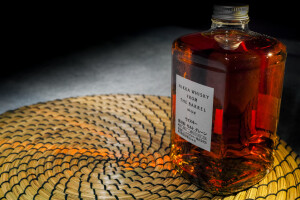While it has been something of a well-kept secret, the truth remains: some of the Japanese whisky sold in your neighborhood liquor stores may not have been produced in Japan. Under (previous) standards, it is possible that your Japanese whisky (whiskey) was a blend containing a base whisky made in Scotland (or elsewhere) or blended with a portion of non-grain-based spirit. In addition, it may have been aged for a noticeably short period of time. (Important note: this does not apply to all—or even most—Japanese whisky, but the possibility is out there.)
However, as of April 1, 2021, a new set of rules, as defined by Japan Spirits & Liqueurs Makers Association, will come into force for its association members. Please note that these rules are not the result of legislation and are therefore not legally enforced by government entities. However, many whisky producers in Japan are indeed members of the association and will therefore be in observance. Producers will have until March 31, 2024 to bring all their products into compliance.
These new regulations include the following standards for Japanese Whisky:
- Base ingredients: limited to malted grains, other cereal grains, and water extracted in Japan. Malted grains must always be used.
- Production process: saccharification, fermentation, and distillation must be carried out at a distillery in Japan.
- Aging: the spirit must be aged in Japan in wooden casks (maximum capacity of 700 liters) for a minimum of 3 years
- Bottling proof: minimum 40% abv
- Additives: caramel coloring is allowed
Products in compliance with the new regulations will be labeled with the term “Japanese Whisky” (or “Japanese Whiskey”) with no additional verbiage placed between the two words. In addition, products must comply with the new rules to use any of the following on the label: geographic locations in Japan, pictures of the Japanese flag, names of people that evoke Japan, terms associated with the history of Japan, or the names of Japanese rivers or mountains.
Products that continue to contain sprits not produced in Japan may be labeled as “world blends” or “world whisky.” Alternatively, they may remain unspecific as to origin.
References/for more information:
- Standards for Japanese Whisky Established February 12 2021
- Statement regarding whisky labeling standards from JSLMA
- https://www.nomunication.jp/2018/07/06/infographic-japanese-whisky-real-or-fake/
- https://www.winemag.com/2021/03/11/japanese-whisky-regulations-change/
Post authored by Jane A. Nickles…your blog administrator: jnickles@societyofwineeducators.org

